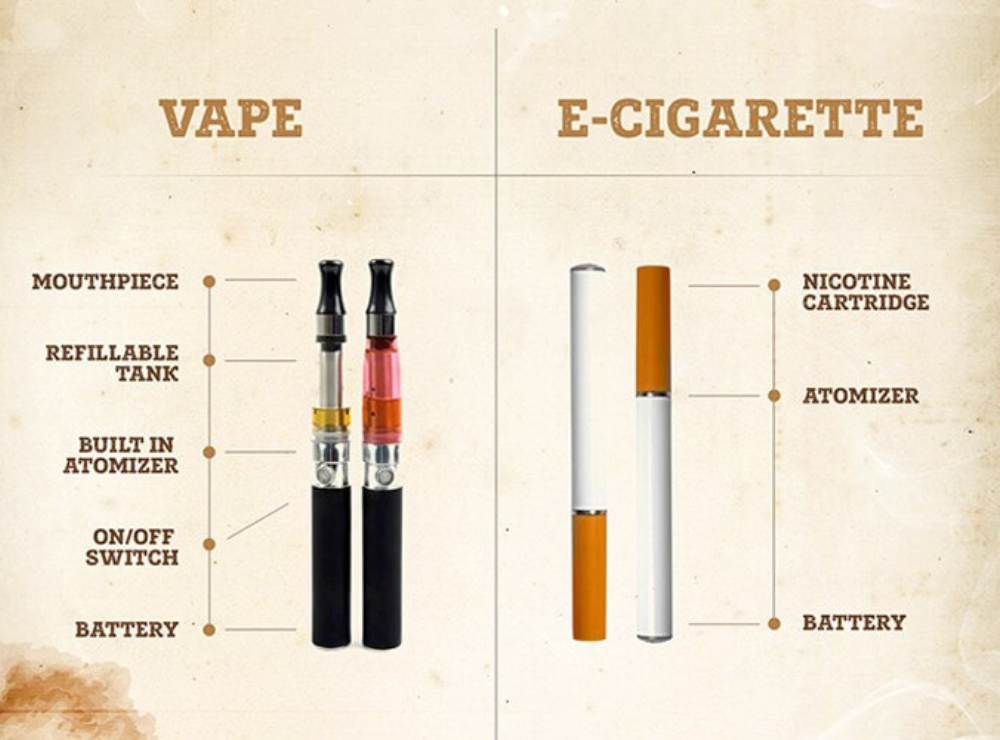1. Components of an E-cigarette:
· Battery: E-cigarettes are powered by rechargeable batteries that provide the energy needed to heat the liquid and produce vapor.
· Atomizer: The atomizer is a heating element that vaporizes the e-liquid. It may also contain a coil and wicking material (often cotton) that absorbs the liquid.
· E-liquid (Vape Juice): E-liquid is a solution that typically contains nicotine, propylene glycol (PG), vegetable glycerin (VG), flavorings, and other additives. The nicotine concentration can vary, allowing users to choose their desired level.
· Mouthpiece: The mouthpiece is where users inhale the vapor produced by the device.
2. Vapor Production: When a user activates the e-cigarette (usually by pressing a button or inhaling), the battery powers the atomizer, which heats the e-liquid. This process creates a vapor that is inhaled into the lungs and exhaled.
3. Nicotine Delivery: E-cigarettes are often used as an alternative to traditional tobacco smoking. They deliver nicotine, which is the addictive substance in cigarettes, without the harmful tar and many of the chemicals found in tobacco smoke.
4. Flavors: E-liquids come in a wide variety of flavors, ranging from traditional tobacco and menthol to fruity, dessert, and beverage flavors. The availability of flavors has been a point of controversy, especially when it comes to appealing to youth.
5. Health and Safety Concerns:
· Less Harmful Than Smoking: E-cigarettes are generally considered less harmful than traditional cigarettes because they do not produce tar and many of the harmful byproducts of combustion. However, they are not risk-free, and long-term health effects are still being studied.
· Youth Vaping: The use of e-cigarettes among young people, including teenagers, has raised concerns due to the potential for nicotine addiction and the unknown health effects of vaping.
· Vaping-Related Illnesses: In recent years, there have been cases of vaping-related lung illnesses, often associated with the use of e-cigarettes containing THC (the psychoactive compound in cannabis) or illicit substances. These cases have led to increased scrutiny of vaping products.
6. Regulations and Legal Status: The regulation of e-cigarettes and vaping products varies by country and region. Some places have implemented strict regulations, including age restrictions, flavor bans, and labeling requirements, while others have more permissive policies.
7. Smoking Cessation Aid: Some individuals use e-cigarettes as a smoking cessation aid, gradually reducing their nicotine intake over time with the goal of quitting smoking altogether. While this approach has helped some smokers quit, it is not without controversy, as e-cigarettes are not approved by all health authorities as smoking cessation tools.
8. Public Opinion: Public opinion on e-cigarettes and vaping is divided. Some people see them as a less harmful alternative to smoking, while others are concerned about their potential health risks and impact on youth.
9. Research and Studies: Ongoing research is being conducted to better understand the health effects of e-cigarette use, as well as their effectiveness as smoking cessation tools.
E-cigarettes and vaping have had a significant impact on the tobacco industry and smoking habits, both as a potential harm reduction tool for smokers looking to quit and as a source of concern due to their appeal to young people and potential health risks. The regulation and perception of these products continue to evolve as more data becomes available.

















